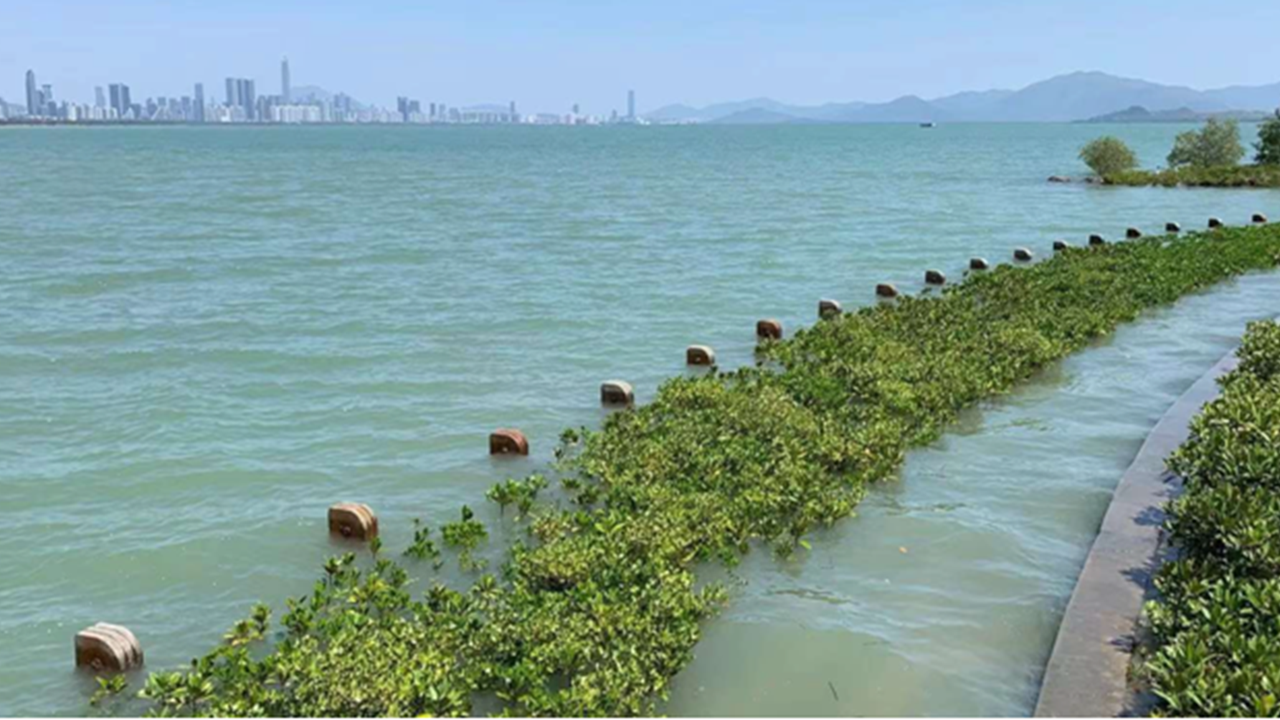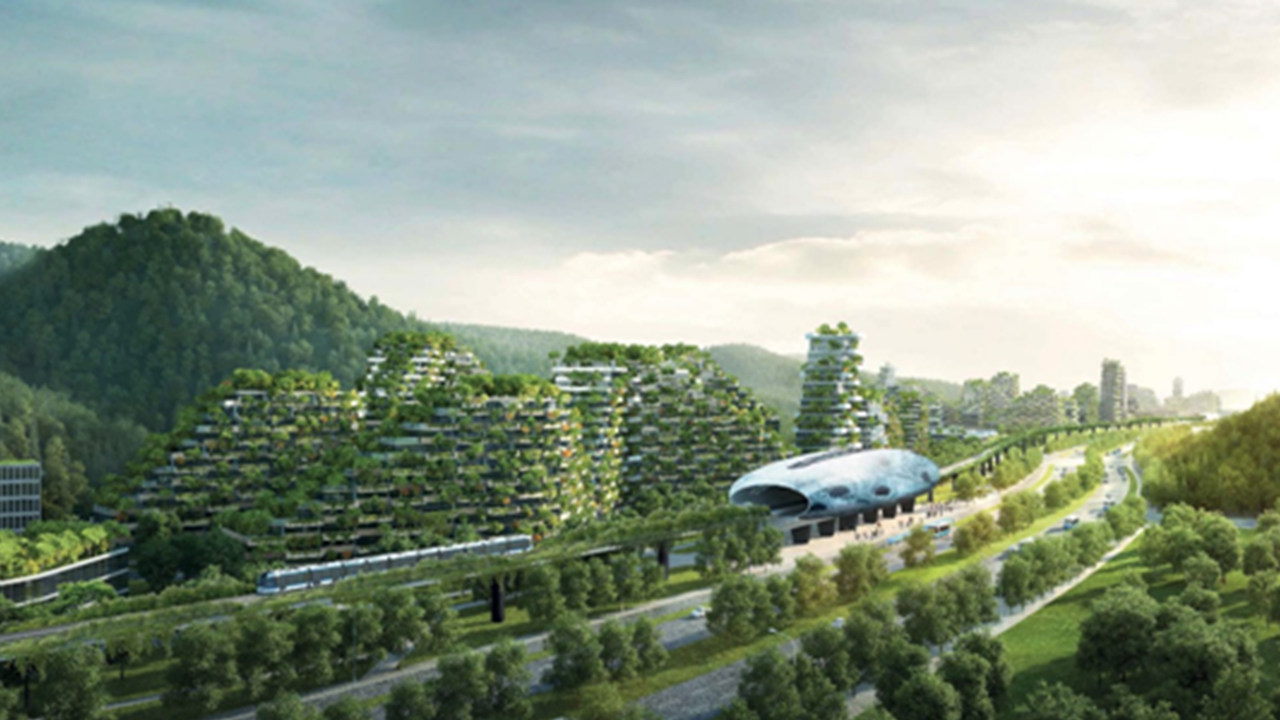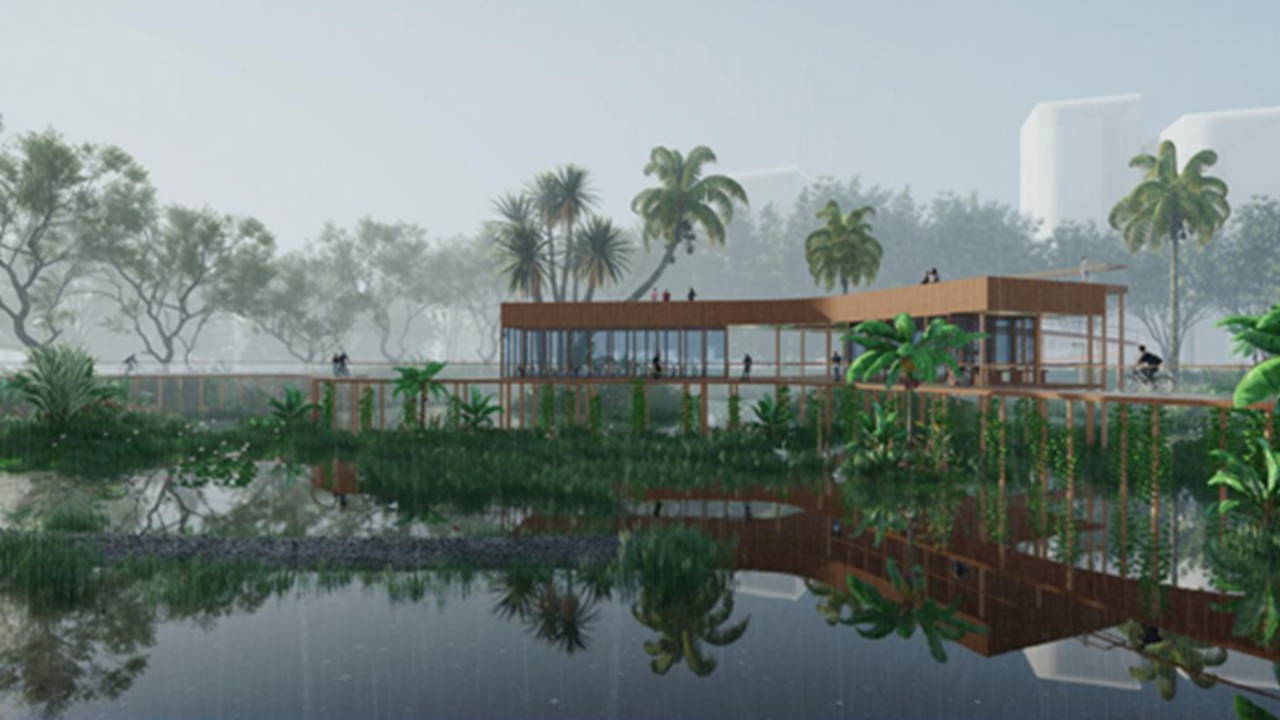A call to action for climate solutions
Writer: Matteo Convertino | Editor: Zhang Chanwen | From: Shenzhen Daily | Updated: 2023-11-03
Sea levels in Shenzhen are rising at an alarming rate of three to five centimeters annually. At this pace, significant portions of coastal areas could be submerged within 60 to 80 years. However, the consequences of rising sea levels extend beyond water intrusion. Issues such as hypersalinity and nutrient overloading also arise, which may contribute to ecological collapse and the deterioration of the built environment.
深圳的海平面正以每年3-5厘米的惊人速度上升。按照这个速度,大部分沿海地区可能会在未来60-80年内被海水淹没。然而,海平面上升导致的不仅仅是海水蔓延内陆,还有高盐度和营养过剩等问题。这可能会导致生态系统的崩溃和建成环境的恶化。
The areas most affected by sea level rise are reclaimed lands. Satellite measurements indicate that Shenzhen’s reclaimed land is experiencing significant coastal subsidence, particularly in areas such as Shenzhen’s airport, the Bao’an CBD area, Qianhai Bay, and Shenzhen Bay. Unfortunately, these regions are also most prone to increasing floods, droughts, extreme heat waves, and tropical cyclones, as we have been experiencing this summer.
受海平面上升影响最大的是填海造地。根据卫星的测量,深圳的填海造地正在经历显著的地表下沉,尤其是深圳机场、宝安中心区、前海湾和深圳湾等地区。不幸的是,这些地区也更易受到洪水、干旱、极端热浪和热带气旋等自然灾害的影响,正如今年夏天所经历的那样。

Shenzhen sea level rising problems are already evident in Shenzhen Bay Park where the high tide submerges the designed walkway with 60 cm, on average, of water twice a day. Courtesy of Matteo Convertino
In ecosystems, everything is interconnected, including human beings. Water plays a crucial role in shaping and stabilizing ecosystems as a key driver and as a byproduct of biodiversity. However, the disruption of coastlines, river courses, deltas (e.g., the Dasha River Delta), wetland connectivity, and landscape elevation is altering the hydrological cycle. This, in turn, impacts water distribution and availability on land and has far-reaching implications especially for marine biodiversity, including mangroves and oyster reefs that depend on water fluxes and their nutrient supply.
在生态系统中,万物相互关联,包括我们人类。水资源是生物多样性的主要驱动力,也是生物多样性的副产品。在塑造和稳定生态系统方面,水资源发挥着至关重要的作用。然而,海岸线、河道、三角洲(如大沙河三角洲)、湿地连通性和地形高差的破坏正在改变水文循环。这反过来又影响了陆地水资源的分布和供应,尤其对海洋中的生物多样性产生了深远的影响,比如依赖水流及其营养供应的红树林和牡蛎礁。
To address these pressing water-related issues, we need to integrate pro-climate actions at all levels, from buildings to communities, to preserve or enhance the climate-biodiversity-habitat nexus that underpins ecosystem functions. Therefore, it is crucial to preserve and connect natural ecosystems while promoting biodiversity within human-made structures, from buildings to infrastructure.
为了解决这些水资源相关的紧迫问题,从建筑到社区,我们需要联合各个层面的力量来应对气候变化,以保护或加强气候、生物多样性以及栖息地之间的关系。这是生态系统发挥功能的基础。因此,在保护和连接自然生态系统的同时,促进从房屋到基础设施等人造建筑中的生物多样性,是至关重要的。

A computer-generated image of Liuzhou Forest City where horizontal and vertical ecological corridors are construed by following the natural elevation and yet creating a biodiversity continuum that preserves species and water flows. Courtesy of Stefano Boeri Architetti

A computer-generated image of Pailao River Blueway Project, where wetland and streams, together with natural vegetation, are enhancing water retention and distribution capacity in a reclaimed land area. Courtesy Shenzhen Bao’an District water authority
Since 2000, Shenzhen has been experiencing more extreme precipitation events, with a perceived increase in both extreme wet and dry years. This leads to numerous challenges, such as droughts with significantly lower winter precipitation and floods caused by intense summer storms that are aggravated by disrupted habitats, resulting in water being redirected to undesired areas.
自 2000 年以来,深圳经历了越来越多的极端降水事件,极端潮湿年和极端干旱年都明显增加。这带来了诸多挑战,如冬季降水量明显减少导致的干旱,以及夏季强暴雨引发的洪涝灾害。
Without action, the number of days with moderate and heavy rain in the city will increase by 16.93% and 29.33%, respectively, by the end of the 21st century, under the worst projected scenario. This, coupled with rising sea levels, presents a major problem if we continue with our current landscape-altering practices.
如果不采取行动,最糟糕的情况是,21世纪末深圳的中雨和大雨天数将分别增加 16.93% 和 29.33%。如果我们继续目前改造地貌的做法,日益增加的降水和海平面上升,将会给人类造成大麻烦。
Therefore, it is imperative that we adapt to a changing climate and prioritize ecological enhancement alongside mitigation efforts. By enhancing the ecology as an integral part of the natural and built environments, we can regulate the climate and generate self-forming habitats. These efforts include enhancing connected sponge habitats, restoring delta and estuarine drainage, and building ecosystems that mimic natural landforms, attract species and regulate the hydrologic cycle. Changes in response to future climate challenges are necessary, with nature as the building block of our endeavors. We have the power to shape the future climate through our choices and investments in ecology, that is all ecosystem interconnections. Urgent policies, funding, and transdisciplinary teamwork are necessary to ensure our survival. Development cannot come at the expense of sacrificing nature, as it is the foundation of any sustainable future.
因此,我们必须适应不断变化的气候,在努力减缓气候变化的同时,优先考虑改善生态环境。通过将生态作为自然环境和建成环境的组成部分来加强,我们可以调节气候并形成自我形成的栖息地。这些努力包括加强相连的海绵栖息地、恢复三角洲和河口排水系统,以及建设模仿自然地貌、吸引物种和调节水文循环的生态系统。应对未来气候挑战的变革是必要的。大自然是我们努力的基石。我们有能力通过对生态学的选择和投资来塑造未来的气候,即所有生态系统之间的相互联系。为确保人类的生存,我们必须制定紧急的政策,提供资金,并推动跨学科团队的合作。发展不能以牺牲大自然为代价,因为大自然是可持续未来的基础。